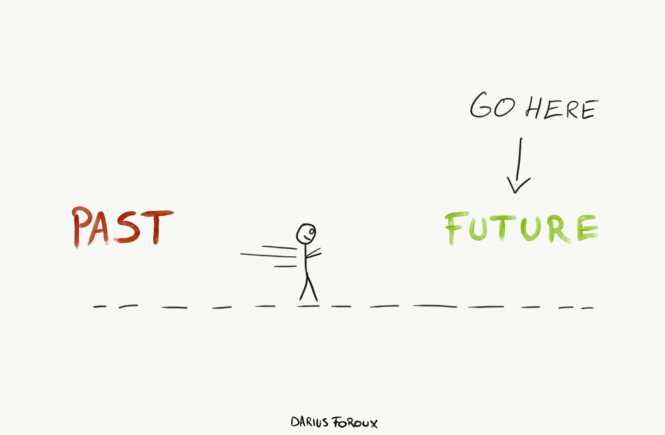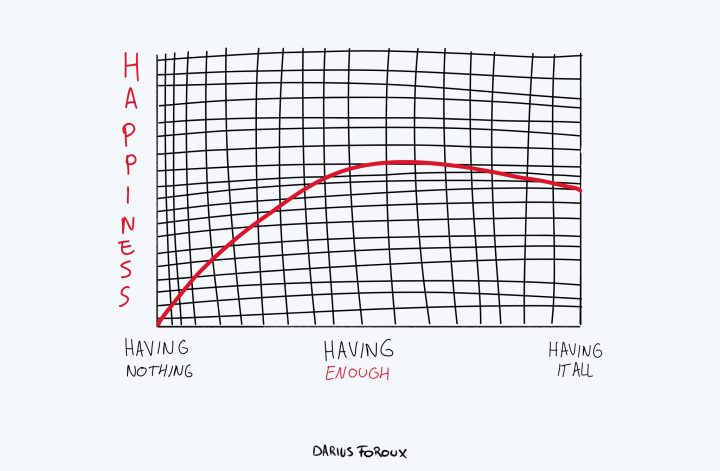In 1976, an 18-year-old was involved in a car accident. He got into a rear-end collision with a truck that completely wrecked his own car. Surprisingly, the young man got out of the accident without injuries.
He only had a sore knee, which he thought was from the collision. But the pain didn’t go away. He was an active basketball player in school and assumed the pain was caused by too much stress.
But after the basketball season ended, the pain was still there, and he decided to visit a doctor. Four months after his accident, he was diagnosed with osteogenic sarcoma, a type of bone cancer that often starts in the knee and spreads quickly. The doctors immediately realized that his best chance of survival was to amputate his leg, followed by chemotherapy.
On 9 March 1977, five days after his diagnosis, doctors amputated his right leg 15 cm above the knee.
Running 143 Consecutive Marathons
The young man’s name was Terry Fox, and like any other 18-year-old, he was totally shocked when he heard that he had cancer at his age.
With your whole life in front of you, it’s hard to imagine what such a diagnosis means. No matter how much emotional intelligence you have, it’s impossible to feel what Terry Fox felt those days.
But he didn’t dwell on his situation. He didn’t become sour. In fact, a few weeks after the amputation, Terry Fox was already playing golf on an artificial leg with his father. But his cancer wasn’t cured. After the surgery, he underwent chemotherapy for nearly 1,5 years.
During that time, he saw how other cancer patients suffered—which made an impact on Fox. Inspired by Dick Traum, an amputee who had run the New York City Marathon, he decided to run across Canada to raise awareness for cancer.
That’s how the “Marathon of Hope” was born. After training for more than a year, Terry Fox began his nearly impossible feat on April 12, 1980, on the east coast of Canada.
For 143 days, he ran a marathon a day. Remember, Terry Fox was a cancer patient with one leg. He ran through rain, wind, storm, and pain.
Even though he never finished his marathon, he did something that no one ever did. After 5,372 km (3,338 miles), cancer spread to his lungs and he was forced to stop on September 1, 1980. Ten months later, 30 days before his 23rd birthday, Terry died.
Confronting Pain
What drove this man? Despite facing the biggest setback in life, terminal illness, Terry Fox did not give up. In fact, he doubled down on suffering. Instead of treating his pain, he made it worse.
When I look at my own life, I look for something to soothe the pain at the least sign of it. Whether it’s physical or mental, we often look for something to treat our pain. We look for an escape.
Instead, Terry looked for it. He said:
“I got satisfaction out of doing things that were difficult. It was an incredible feeling. The pain was there, but the pain didn’t matter.”
That’s a whole different mindset. Most people have a negative association with difficulty. As soon as things get hard, they quit. But what if you changed your mindset?
Instead of running away from hardship, you look for it. I’ve been training myself to get more pleasure out of doing hard things. And I’ve got to tell you, it’s not easy.
Doing hard things really makes you realize why humanity runs from it. Comfort is easy. It requires 0 effort. It doesn’t require a genius to understand that. But when we’re in the middle of something that’s hard, we don’t think about that. We look for the easy way out.
Building a career, starting a business, working on a relationship, getting in shape, staying happy, learning a new language, moving to a different country, traveling the world, improving your skills—it’s all HARD.
But that shouldn’t hold you back. If you want to live your life without regrets, there’s only one thing you can do: Go all in.
If You Would Die Today? Would You Be Okay With That?
“Live each day like it’s your last.” It’s a cliche you hear people use who claim they live in the moment. But it’s misunderstood. The idea is not to really live like it’s your last day.
If we all did that, we wouldn’t have a society. The Stoic philosopher Seneca wrote about it 2000 years ago. He said that if today was really your last day, were you happy with what you did?
Imagine it’s the end of the day, and you find out you would not wake up in the morning, would you be okay with that?
If you do the things you always wanted to do, no matter how hard they are, your answer will be yes. Here’s what Terry said about that:
“Today we got up at 4:00 am. As usual, it was tough. If I died, I would die happy because I was doing what I wanted to do. How many people could say that? I went out and did fifteen push-ups on the road and took off. I want to set an example that will never be forgotten.”
The next time you’re dealing with pain, think of Terry. That will help you to push through it.




